Generations have relayed for more than 40 years, making the chime of Zeng Houyi, who has been sleeping for more than 2,400 years, "alive"
The 1st Golden Chime Bell International Composition Competition is currently collecting chime music works for musicians from all over the world. According to the plan, on December 27 this year, the award ceremony and premiere will be held at Carnegie Hall in New York, USA. From excavation to music theory excavation to performance dissemination, generations of people have relayed for more than 40 years, making the chime of Zeng Houyi, who has been sleeping for more than 2,400 years, "live".

The set of chimes imitated by Li Youping retains its true color—golden bronze. Photo by reporter He Xiaogang
Knock out the first phrase, "Wonderful and shocking"
"We typed the first phrase of "The East is Red" back then. It was amazing and shocking." Feng Guangsheng, 68, still remembers the exciting moment on August 1, 1978.
The chime bell of Zeng Houyi was unearthed from Leigu pier in Suizhou, Hubei less than 3 months ago, and it was performed for the first time in Suizhou. Feng Guangsheng, who studied music, was one of the performers.
Feng Guangsheng said that the performance had a sense of time travel, and the audience could not believe that the music was played by instruments that were more than 2,400 years old.
What Feng Guangsheng did not expect was that the rest of his life was associated with chimes. Even after retiring from the post of director of the Chime Clock Research Institute, he is still busy with the chimes every day.
Back in May 1978, the archaeological team led by the archaeologist Tan Weisi excavated the tomb of Zeng Houyi in Leigudun, Suizhou. It took the team two months to clear the fill. After the stagnant water was drained, everyone saw a dark wooden column surfaced, followed by three-story beam-like columns with ancient bells hanging from the beams...
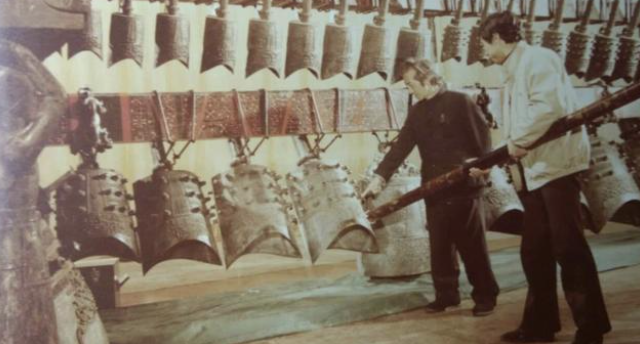
In 1978, the rehearsal of Zeng Houyi's performance after the chime was unearthed. The person wearing black was Huang Xiangpeng, the director of the China Institute of Music at the time, and the person on the right holding a stick and ringing the bell was Feng Guangsheng. Profile photo.
At the age of 24, Feng Guangsheng was transferred from the Cultural Center of Guanghua County, Hubei (incorporated into Laohekou City in 1983) to the excavation line of the tomb of Zeng Houyi. He graduated from the Music Department of Hubei Institute of Arts (the predecessor of Wuhan Conservatory of Music), but he did not know that these bells were chimes.
After cleaning and testing, there are 64 pieces of Zeng Houyi chimes, which are organized into 8 groups and hang on a 3-layer bell frame. The total weight of the full set of chimes is 2567 kg. These bells were restored and erected soon after they were unearthed.
Can the bell still ring? What kind of sound will it make? What kind of percussion method? Is it a simple ritual or a musical instrument? What does the inscription on the bell say? At that time, experts in bronze ware, ancient writing, music, etc. came from all over the country, and all physical and written materials were open to experts.
There are more than 3,700 inscriptions on the bell body, bell frame and wall clock components of Zeng Houyi's chime, which can be called "playing instructions". Feng Guangsheng said with emotion: "This is simply a ready-made rhythm system, more than 2,100 years earlier than the piano known as the 'king of musical instruments' in the West."
The performance was held in an auditorium in Suizhou, and the opening song was "The East is Red", which was most familiar to everyone in that era. To this end, Feng Guangsheng and other performers conducted several days of rehearsal.
In March 1992, the replica of Zeng Houyi's chime represented the first time the original went abroad and was displayed in Japan. Participant Feng Guangsheng recalled: "In 50 days, 150,000 people came to the scene to listen to the chime music. The maximum number of 10,000 people in one day was overwhelming. The charm of chime bells 'crossed' borders at once."
"The research is not in-depth and incomprehensible, so hurry up"
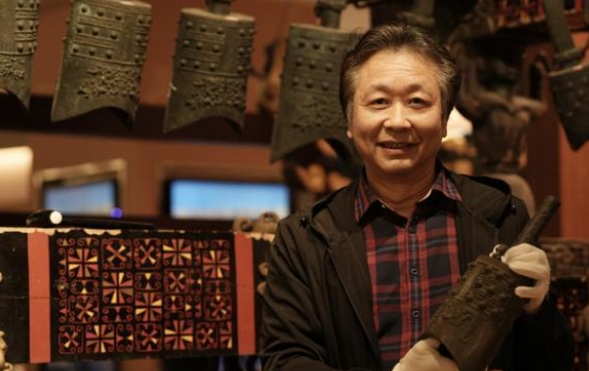
Li Youping, professor of Wuhan Conservatory of Music. Photo by He Xiaogang, reporter of Changjiang Daily
"Let the chimes continue to 'live'!" On March 10 this year, Li Youping, a 59-year-old professor at the Wuhan Conservatory of Music, smelled the ink in front of a reporter from Changjiang Daily, and unpacked the book "Chimes and Symphony" that he had just received.
Chimes and Symphony is the latest achievement of Li Youping's research on the creative transformation of chimes. As the artistic director, he moved the "Concert of New Works of Chimes and Symphony Orchestra" affected by the epidemic to online recording, and has this new book.
"In another 222 days, I will retire. At that time, all my time will belong to chimes." Li Youping looks forward to having more time to focus on the inheritance, innovation and promotion of chimes after retirement.
Tan Weisi repeated to Li Youping when he was hospitalized before his death: "Our research on Zeng Houyi's chimes is not in-depth and incomprehensible. We must hurry up." This made Li Youping feel that there was always a sense of urgency. The grandsons were named "Zeng Houjia" and "Zeng Houyi", bearing in mind their research tasks.
More than 40 years ago, after Zeng Houyi's chime was unearthed, Li Youping, who was studying in Wuhan Conservatory of Music, began to pay attention to Huang Xiangpeng's research results. In 1997, he became the first doctoral student led by Huang Xiangpeng.
Huang Xiangpeng, born in 1927, devoted his life to the study of Chinese traditional music and Chinese music history, and served as the president of the Chinese Traditional Music Society.
"Research on the Standard Pitch of Huang Zhong in the Song Dynasty" is the topic selected by Huang Xiangpeng for Li Youping's doctoral dissertation. However, just a few days before Li Youping received the doctoral student acceptance letter, Huang Xiangpeng unfortunately passed away. Later, Li Youping took Dasheng chimes of the Northern Song Dynasty as the object as a breakthrough in his research.
The Dasheng bell was formulated during the reign of Emperor Huizong of the Song Dynasty, and was based on the "Song Gongwu" bell unearthed in the Song Dynasty in the pre-Qin period. Both Zeng Houyi chimes and Dasheng chimes are bronze chimes with similar appearance and can be played, and the latter's main function is to set the tone as a standard temperament.
For more than 20 years, Li Youping has found more than 30 Dasheng chimes from home and abroad. A few years ago, a collector in Harbin called to say that he had an ancestral Dasheng chime in his home. Li Youping rushed to Harbin immediately, saw this Dasheng chime, and saw the words "Shangjindu Senglu Bureau Huayin" on this chime for the first time. This was the government at that time doing something similar to the current census of cultural relics among the people, and the lettering was equivalent to giving an identity certificate.
Li Youping said that Dasheng chimes inherited the "soul" of Zeng Houyi's chimes. Dasheng chimes embodies the actual level of scientists and musicologists in the Song Dynasty in researching, manufacturing and using chimes, and inherits the shape of Zeng Houyi's chimes.

A set of chimes imitated by Professor Li Youping. Photo by He Xiaogang, reporter of Changjiang Daily
In 2013, Li Youping took the nostalgic music of the Song Dynasty as the topic and presided over the design of the new Dasheng bell based on the Dasheng chime. A set of 20 Dasheng new bells is more in line with the audio aesthetics of contemporary society, reflecting the authenticity of history, and can also perform on the same stage with global musical instruments.
In 2017, the Song Dynasty Nostalgic Concert was held at the University of Michigan in the United States. The golden Dasheng new bell was a sensation and restored the Song Dynasty elegant music well.
The most common ornament in Li Youping's office are chimes. As the director of the China Music Archaeology Research Center, he advocates that his graduate students can make a chime by themselves before graduation. He also specially imitated a set of natural chimes, with a golden bronze appearance. He said that with the golden chimes, the Huaxia Zheng Yin played at Carnegie Hall on December 27 this year must be very special.
"Further discovery and deciphering, restoration of the Chinese Zhengyin of the bell"
Lin Cuiqing, a professor at the Department of Musicology at the University of Michigan, believes that the chimes in the museum describe "the history of dumb music", which cannot allow people today to hear or see Zeng Guo's works and performances at that time, nor are they not contemporary musicians and musicians. The ancient music cognition that the audience can easily understand and apply.
How to make the chime bell restore the Chinese Zhengyin? Many musicians began to recreate through relevant literature.
Tan Jun, director of the Department of Chinese Instrumental Music at Wuhan Conservatory of Music, said: "So far, no remains of ancient chime music scores have been found, and no sound remains. The performance of the existing chime music is only our speculation and imagination of the ancient chime concept."
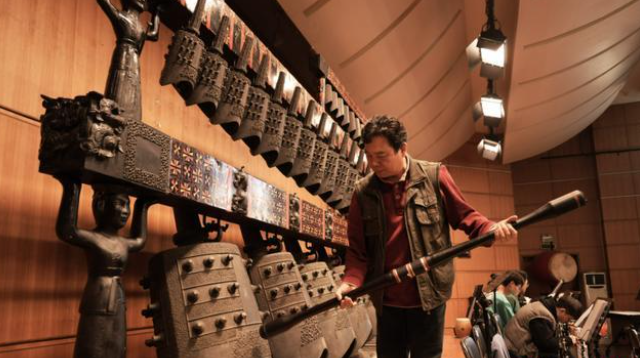
On the afternoon of March 10, Professor Tan Jun of Wuhan Conservatory of Music taught the course "Chime Bells and Ancient Music Performance" to students. Photo by He Xiaogang, reporter of Changjiang Daily
"The information contained in Zeng Houyi's chime still needs to be further discovered and deciphered in order to restore the Chinese orthodoxy of the chime." Tan Jun, whose hometown is in Badong County, Enshi Autonomous Prefecture, Hubei, named his studio "Chuba Music Palace". Continue to draw nutrients from Bachu musical instruments.
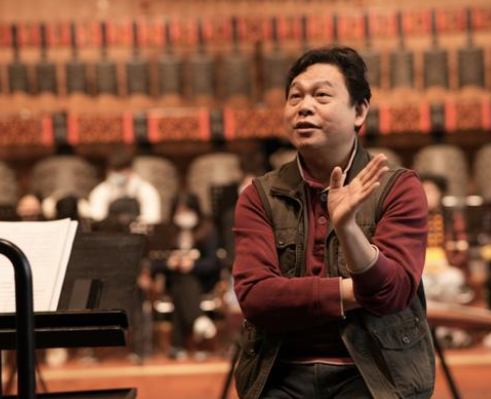
Tan Jun, a professor at Wuhan Conservatory of Music, is giving a lecture on "Chime Bells and Ancient Music Performance". Photo by He Xiaogang, reporter of Changjiang Daily
When more people paid attention to the restoration and development of the chime, Tan Jun set his sights on the hammer of the chime. "It is very difficult to restore Huaxia Zhengyin with a certain cultural heritage and acceptance by contemporary people. After all, including music, the aesthetics of contemporary people are different from those of ancient people. However, for chimes, Percussion instruments of different materials, different weights, and different hardnesses will have a significant impact on the timbre and sound quality of the percussion instrument.”
In the 1990s, Tan Jun cooperated with the Acoustic Room of the No. 701 Research Institute of China Shipbuilding Industry Corporation to sample the recordings of chimes, and then conduct spectrum analysis. After joint research, on the basis of wood materials in the past, plastic, nylon and synthetic materials have been added to the hammer materials.
After solving the material problem of the hammer, Tan Jun quickly calculated that the weight ratio of the hammer to the bell is 0.5 kg: 40 kg. "A mallet hitting a small bell or a mallet hitting a big bell won't get a good sound."
The hammer designed by Tan Jun has two shapes of "antique" and "special shape", and there are 5 styles such as T-shaped, round head, long stick, brush and chopsticks. This takes the playing of chimes to a new level. In the past, there were only two types of chime playing: single-click and double-click. Now, new techniques such as roll, shake, stroke, sweep, repetition, strumming, smothering, and muting have been introduced. These playing techniques quickly attracted the attention of the music industry. In the performance of the Hong Kong Handover Celebration Music "Symphony 1997: Heaven, Earth, and Man" composed by famous musician Tan Dun, Tan Jun held various hammers and played wonderful music on the original chime, which shocked the world. This performance is also the third time in history that the original chimes will be played. "The original has a purer tone than any replica." Tan Jun, who recorded for 12 hours at the Hubei Provincial Museum, did not feel tired at all.
The small bell is ethereal, the Yong bell is round and full, and the big bell is majestic... Tan Jun said that as the right tone of the Huang Zhong Da Lu and the country, the chime is not a simple musical instrument, but a ritual instrument.
"This kind of music is only available in China, there is no reason not to love it"
Chutian Terrace in Moshan Scenic Spot of East Lake in Wuhan is famous for performing chime music and dance. It was planned and designed by musician Jiang Langchan. On the Mid-Autumn Festival in 2021, Wang Xiaoyang, a "post-90s" youth from his hometown in Henan, came to the stage and listened to "King Qin's Breaking the Array" several times in a row. He was reluctant to leave, and asked to stroke the chime.
Pang Xueqian, a performer of the Chime Bells Ancient Orchestra, learned that the young man in front of him was visually impaired and specially helped him to touch the chimes.
The chime music that excited Wang Xiaoyang came from the hands of Tan Jun, a disciple of Jiang Langchan, while Pang Xueqian, who helped him to stroke the bell, was a student of Tan Jun. Pang Xueqian said: "At peak times, thousands of people come to enjoy the chime music and dance every day. There are 6 performances every day, each of 15 minutes. The chime bell music rehearsal is also guided by Mr. Tan."
Chutiantai also added traditional Chinese musical instruments such as flute and xiao to the chime playing, integrating the chime with the national orchestra. This is fully reflected in Tan Jun's theatrical performance for the closing ceremony of the 7th Military World Games. In "Zhongming for Nine Heavens", Tan Jun combined chimes with advocacy music, and chose Jiangu and Dajinggu with the characteristics of Chinese ritual music and military temperament, as well as more than 20 kinds of Chinese ancient music such as Sheng, Guan, Chi, Xiao, etc. The musical instrument organically combines the rich-colored Jiangnan "jasmine" with the Jingchu "octave", showing the magnificent scene of China.
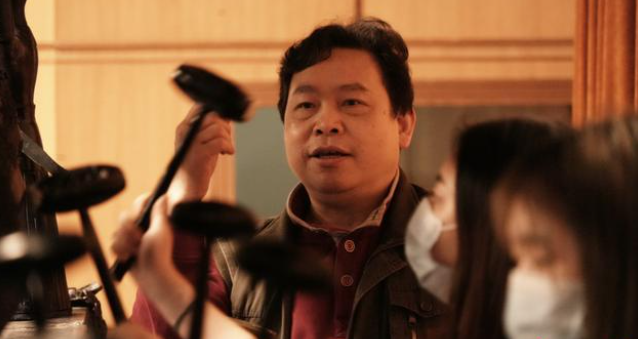
With the advancement of science and technology, chimes have "created" a new height. In February 2017, Wuhan Conservatory of Music, Hubei Provincial Museum, and a musical instrument company in Yantai, Shandong released a new type of chime - an ordinary musical instrument that "transforms" traditional percussion chimes through the keyboard as an interface, which can be used by pianos and electronic organs. The player plays. Some people think that because of the piano-making of chimes, Chinese chimes can be introduced into concert halls, churches, and music academies in major cities around the world. The sound that chimes can enter ordinary homes like a piano spread quickly.
Li Youping said that traditional chimes required four or five people to play, but now one person can complete it. "It is conceivable that a person can drive a caravan to perform, instead of the time-consuming and laborious need to carry heavy chimes in the past."

Tan Jun, a professor at Wuhan Conservatory of Music, is giving a lecture on "Chime Bells and Ancient Music Performance". Photo by He Xiaogang, reporter of Changjiang Daily
Since 2000, the course "Chime Bells and Ancient Music Performance" has been introduced into the classroom of Wuhan Conservatory of Music. In the past 22 years, the number of students attending the class has increased from more than 10 at the beginning to 307 this year. Tan Jun, the lecturer of the course, said that ritual and music are symmetrical. In ancient times, learning music was not a craft, but to educate people's nature through art.
At 1:45 p.m. on March 10 this year, in the Folk Music Hall of Wuhan Conservatory of Music, after listening to a 90-minute "Chime Bells and Ancient Music Performance" class, Wang Chunyi from the bamboo flute major and Zhou Zijing from the yangqin major played the chimes for the first time. "This kind of music is only available in China, and there is no reason not to love it." Wang Chunyi and Zhou Zijing expressed their common feelings.
Involving musical instruments
Guess you like
Hot news
- 01 The handsome guy in 1997 is so advanced in pulling erhu! Netizen: Come and "wash your ears"
- 02 The Simple Difference Between Guqin, Se, and Guzheng
- 03 The difference between the five-stringed lute and the four-stringed lute
- 04 Dulcimer exam and performance repertoire
- 05 The difference between cymbals and cymbals in ethnic musical instruments
 渝公网安备 50010702504639号
渝公网安备 50010702504639号